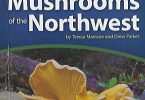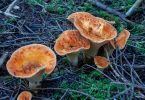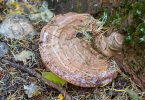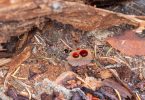I photographed a grouping of Bird’s Nest Fungi (Nidula candida) over an eight week period. I could find no blogpost, photo gallery or literature citation online capturing the timeline, biological process of peridiole (egg-like container for spores) exposure. So, I did this for documentation purposes, a small contribution to science. That’s right, citizen science that was fun and easy to do! The timeline started September 22, 2019 and ended November 16, 2019.
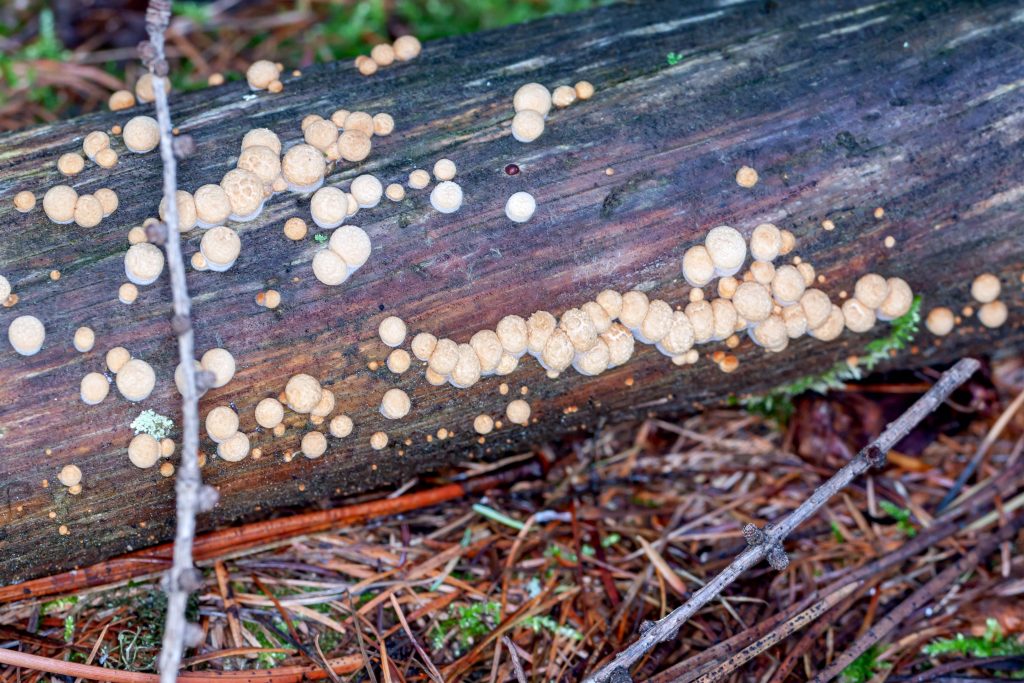
Where
I found these fungi growing at Bass Creek National Recreation Area in western Montana. More specifically along the Nature Trail there. I didn’t recognize them at first. They looked small and wartlike, like puffballs. With a closer look I noticed the woolly surface and not a spiked one – puffball eliminated. Got the idea to follow up the fruiting progress over the rest of fall. The image of the ‘eggs in the nest’ as produced by this fungi is striking and not to be missed.
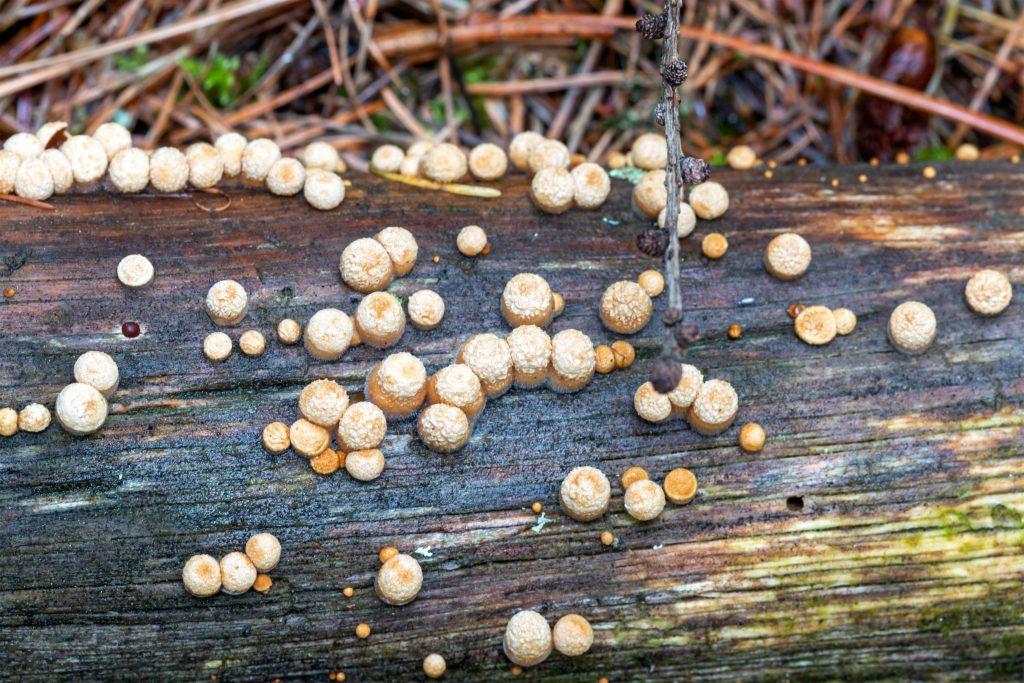
Habitat
The growths were on a six inch diameter branch on the ground within a small, dense, shaded, young conifer stand. The trail area is dominated by old growth Grand Fir (Abies grandis) and Western Larch (Larix occidentalis). Human traffic, disturbance was not likely even just 15 feet off the trail because of branch density. Weather effects did not enter my thinking.

Early winter conditions
It was Just short of 3 weeks (October 11) before snow and cold arrived for a brief, couple days, introduction to oncoming winter. Recorded the event using my camera gear. Wondered if this would stall, prevent maturation or even kill the fungi.
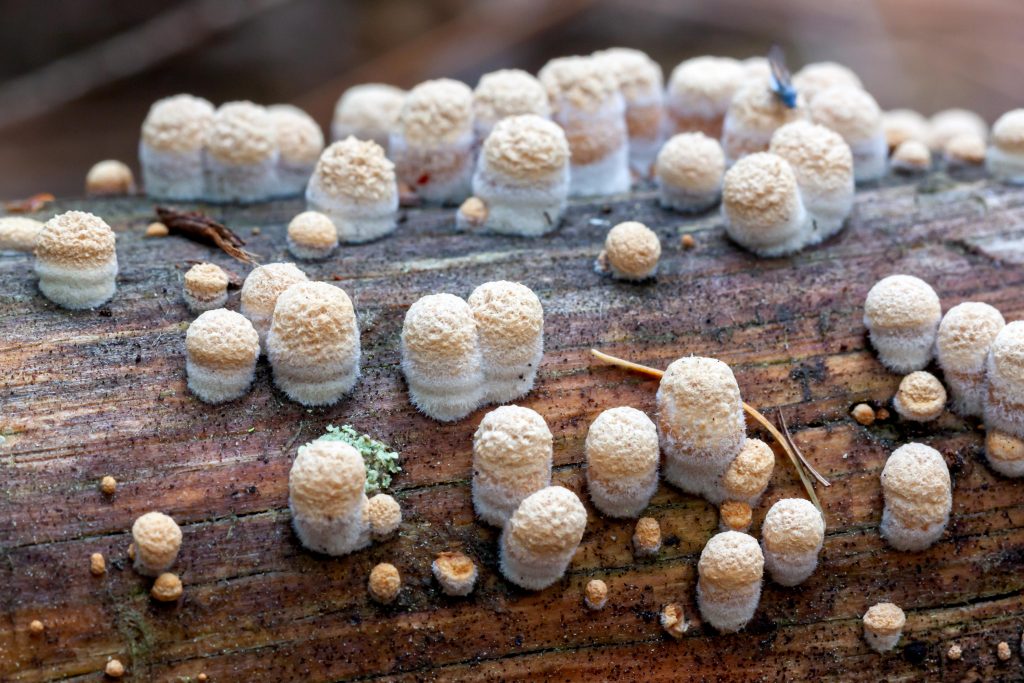
Still okay?
Photographed the mushrooms again four days after winter came and went (October 15) . They appeared okay. Maybe they matured before the sub-optimal conditions. Since the literature states that rain drops are responsible for dispersing the protected and contained spores, inclement weather is probably part of life cycle (isn’t this true for all plants, animals?).
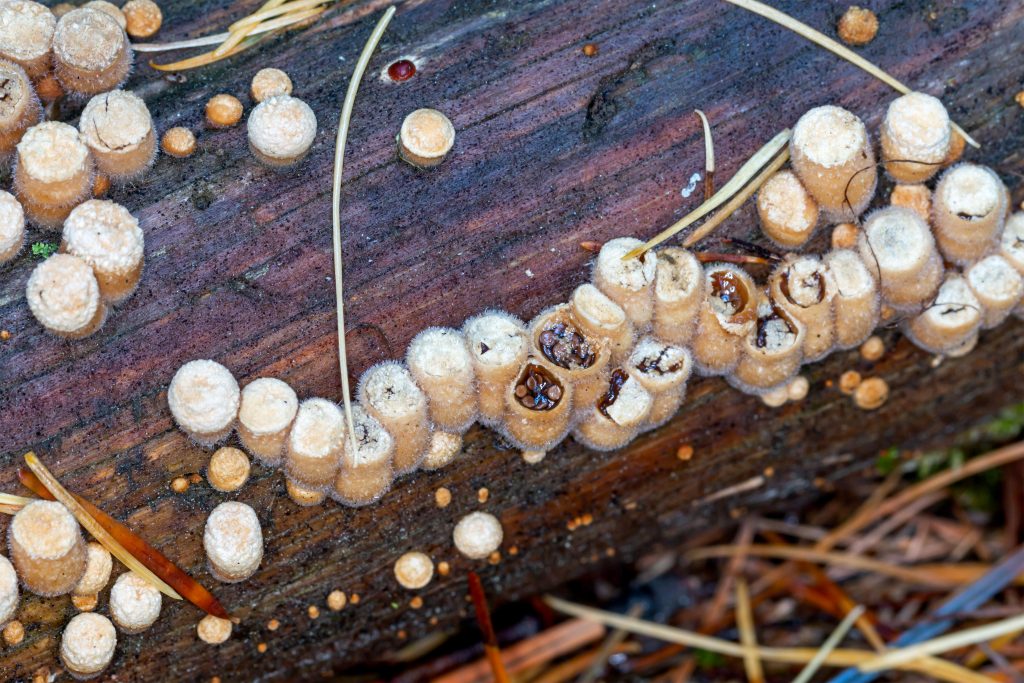
Answer is yes!
On November 16, eight weeks since my discovery, I photographed the fungi after some recent rain. Immediately noted that the top part of the mushroom had been torn away on some of the specimens. Am assuming the rain drops really did do the job. And yep, there were the peridioles (spore containers, egg-like in looks) nestled inside a caramel looking liquid. Appears to be successful maturation. Really cool to find and document!
Summary
It took at least eight weeks for the mushroom of Bird’s Nest Fungi to get to the point of peridiole dispersal, i.e. resemble an open bird nest. How old the mushrooms were when first discovered is unknown. Evenson and Denver Botanic Gardens (2015) note a closely related species fruits from late summer into fall. By the way the ‘bird’s nest’ structure persists for some time. A good reason to check your own wild areas for signs of this unique fungus.


